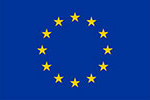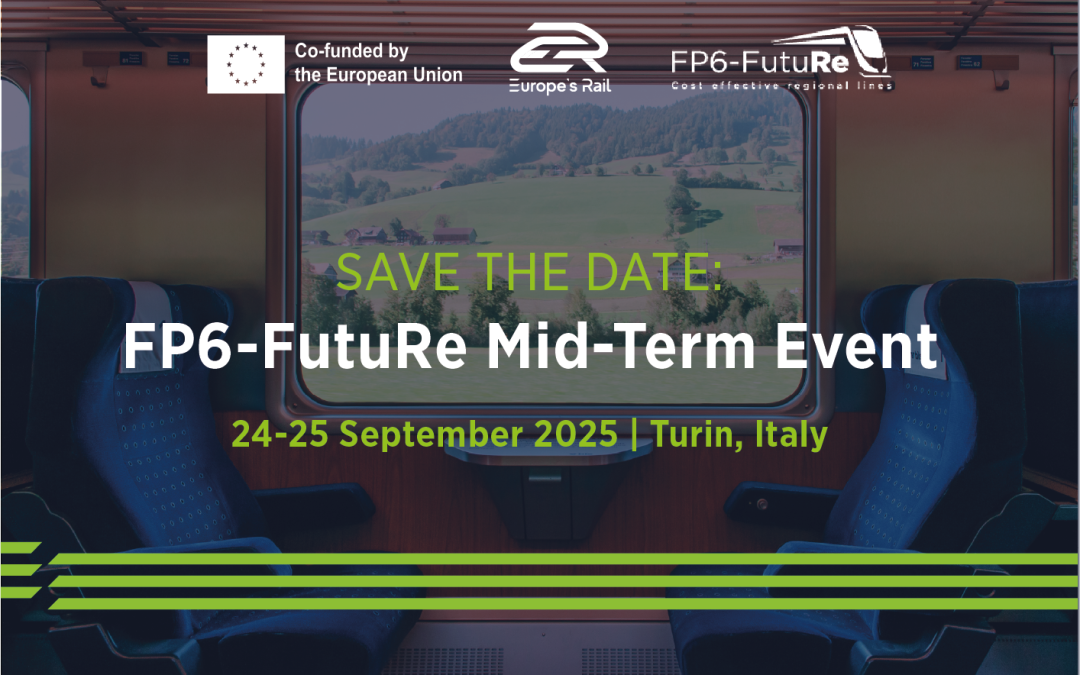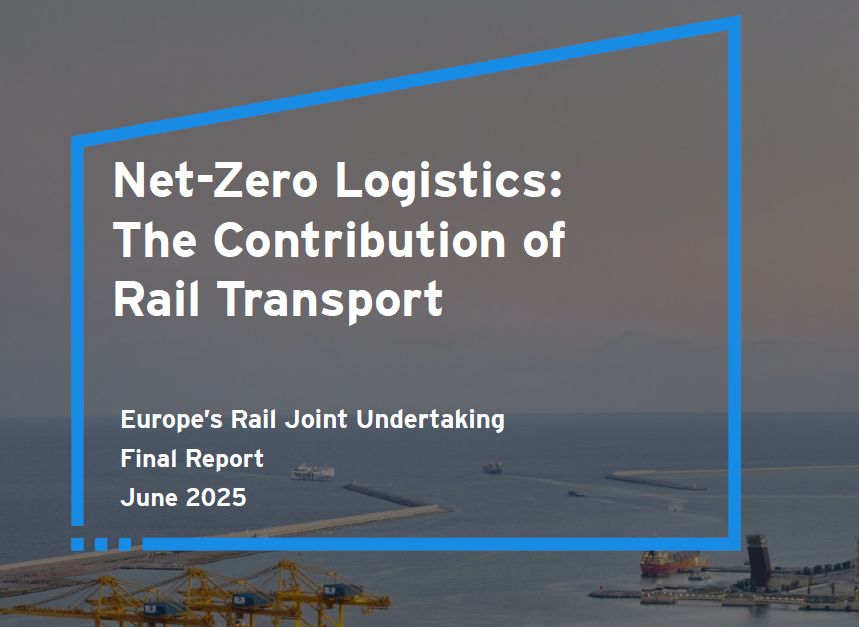Europe must take decisive steps to simplify and modernise its rail systems to strengthen competitiveness,...
Deliverables published by the project
Deliverable 5.2 Technical Specifications of Wagon and Locomotive DAC up to Level 5 (V2)
This document outlines the functional and where needed the mechanical requirements needed for an interoperable design of the Digital Automatic Coupler for freight. The document covers both DAC and Hybrid DAC/Hook couplers to be used in the rail freight segment. The requirements are trying to strike a balance between mechanical and functional requirements, which allows for future innovation and development within the given area.
The document was compiled by using existing peer reviewed standards and the input from technical experts from the main suppliers of automatic couplers within the European Union and from operators and owners of rail vehicles. The draft document was reviewed in open sessions within the FA5 to gather inputs from all stake holders.
The method of verification of the requirements set out in this document are to be found in FP5-TRANS4M-R Deliverable 5.3 – Validation/Test Procedures of Wagon and Locomotive DAC up to Level 5.
Deliverable 5.5 Requirements Specification Yard Automation
This deliverable represents the report of the project results from FP5-TRANS4M-R on yard automation requirements. In detail, it includes:
- Stakeholder analysis document, Operational concept with use cases
- System architecture description
- Catalogue of trackside technical requirements for shunting (e.g. automated stationary brake tests, stationary parking brake functions and solutions for decoupling on the hump)
- Catalogue of technical requirements for automated shunting movement without ETCS (radio control, localization, CCS interface)
- Catalogue of required amendments to TAF-TSI (and other standards)
- Interface and protocols specifications (incl. FA2 and FA3 as well as European Railway Checkpoints)
The document originates from the Subproject Yard Automation in FP5-TRANS4M-R (Work Packages 5, 12, 20 and 21). Find all Work Package descriptions here on our project homepage.
D29.1 Technical definition of the standard IVG for checkpoints and related demonstrators
This report will cover the following topics: demonstrator definition and start of development, prioritization of use cases and mitigation of regulatory barriers for harmonized procedures.[Download not found]
FP5-TRANS4M-R D2.1 Preliminary Operational Procedures V2
This document constitutes Deliverable 2.1 Preliminary Operational Procedures of ER JU Flagship Area 5 project FP5-TRANS4M-R. The document reports results from task 2.1 Target operational procedure description. The project aims to boost innovation for the European rail freight sector, concretely by developing, validating and demonstrating FP5-TRANS4M-R technical enablers. The objective of this document is to provide the first agreed throughout Europe target operational procedures for rail freight. The procedures will define the basis for the development of the innovations for WP3-WP12. It describes the target of full automation of the freight sector, as well as a subset based on the agreed technical enablers in FP5-TRANS4M-R. The section Methodology explains how WP2 intensively aligned the various version of the target operational procedures within the project, as well as within the sector. Sections General Assumptions and Premises as well as Definitions lay the foundation to understand the framework under which the processes must be read. At the centre of this document are the Target Operational Procedures, describing unified processes how to operate the Full Digital Freight Train in Europe. The detailed processes are accompanied by detailed process descriptions. These are followed by a special version of the target procedures focusing on the to be delivered technical enablers in FP5-TRANS4M-R.
D3.1 System Requirements Specification FDFT V1.0
This document constitutes “Deliverable 3.1 System Requirements Specification FDFT” of ER JU Flagship Area 5 project FP5-TRANS4M-R. This document reports results from task 3.2 Train reference system architecture.
The objective of this document is to provide the functional system requirements based on the target operational procedures laid down in deliverable 2.1 “Preliminary Operational Procedures” of task 2.1 of ER JU FP5 TRANS4M-R. The functional system architecture will define the basis for the development of the innovations for WP5-WP12. It describes the target of full automation of the freight sector, as well as a subset based on the agreed technical enablers in FP5-TRANS4M-R.
The section Objective / Aim explains how WP3 intensively aligned the various aspects derived from the target operational procedures within the project.
At the centre of this document, are the Functional System Requirements derived from the deliverable 2.1 Preliminary Operational Procedures, describing what is necessary to operate the Fully Digital Freight Train in Europe. The functional requirements are added to the process descriptions as additional attributes, which have been kept unedited for consistency and ease of reading.
The functional requirements are followed by the Functional reference system architecture including an overview as well as the functional blocks required in FDFT traction units and FDFT wagons. To allow un-restrained innovations to be used, when designing the technical enablers in FP5-TRANS4M-R, the document focusses at the pure functional requirements, wherever possible.
D3.2 Physical reference system architecture FDFT
This document constitutes “Deliverable 3.2 Physical reference system architecture FDFT” of ER JU Flagship Area 5 project FP5-TRANS4M-R. This document reports results from Task 3.3: Specification of physical and data reference system architecture.
The objective of this document is to provide the physical reference system architecture and requirements based on deliverable D3.1 Functional system architecture FDFT in conjunction with deliverable D2.2 User requirements of WP2 of ER JU FP5 TRANS4M-R. The physical system architecture will define the basis for the development of the innovations for WP5-WP12. It describes the target of full automation of the freight sector, as well as a subset based on the agreed technical enablers in FP5-TRANS4M-R.
The physical requirements are followed by the Physical reference system architecture including an overview as well as the physical blocks required in FDFT traction units and FDFT wagons. To allow un-restrained innovations to be used, when designing the technical enablers in FP5-TRANS4M-R, the document focusses at the physical requirements in an open way, as much as possible.
D3.3 Digital_Data reference system architecture FDFT
This document constitutes “Deliverable 3.3 Digital/Data reference system architecture FDFT” of ER JU Flagship Area 5 project FP5-TRANS4M-R. This document reports results from task 3.2 FDFT reference system architecture.
The objective of this document is to provide the Digital/Data reference system architecture and requirements based on deliverable D3.1 Functional system architecture FDFT and D3.2 Physical Reference System Architecture, in conjunction with the deliverable D2.2 User requirements of WP2 of ER JU FP5 TRANS4M-R. The Digital/Data reference system architecture will define the basis for the development of the innovations for WP5WP12. It describes the target of full automation of the freight sector, as well as a subset based on the agreed technical enablers in FP5-TRANS4M-R.
The Digital/Data architectural requirements are followed by the Digital/Data reference system architecture including an overview as well as the logical blocks required in FDFT traction units and FDFT wagons. To allow un-restrained innovations to be used, when designing the technical enablers in FP5-TRANS4M-R, the document focusses at the Digital/Data related requirements in an open way, as much as possible.
Deliverable D4.1 Authorisation Strategy and Overall Safety Plan
The present document constitutes the Deliverable D4.1 “Authorisation strategy and overall safety plan” in the framework of the Flagship Project FP5- TRANS4M-R. Content of WP D4.1: The beneficiaries will determine details of the authorisation process (holder of the vehicle type authorisation, registration in ERATV, categorizing the change according to (EU) 2018/545 [EU3] Article 15(1)) with the aim to fit the DAC and its related functionalities into existing vehicles as a change without need for authorisation (Change not classified as triggering Art. 21(12)(a) of Directive (EU) 2016/797). Based on the input of WP2 and WP3 the beneficiaries will prepare a generic hazard record referred to (EU) 402/2013 [EU1] and define the risk acceptance criteria to assess and finally control the identified hazards. The hazard record and the risk acceptance criteria will be assessed and confirmed by an Assessment Body (AsBo) respectively a competent independent assessor.
Deliverable 5.2 Technical Specifications of Wagon and Locomotive DAC up to Level 5
The present document constitutes the Deliverable D5.2 “Technical Specifications of Wagon and Locomotive DAC up to Level 5” in the framework of the Flagship Project FP5- TRANS4M-R as described in the EU-RAIL MAWP and contributes as well to the Flagship Project 5 – TRANS4M-R. This document outlines the functional and where needed the mechanical requirements needed for an interoperable design of the Digital Automatic Coupler for freight. The document covers both DAC and Hybrid DAC/Hook couplers to be used in the rail freight segment. The requirements are trying to strike a balance between mechanical and functional requirements, which allows for future innovation and development within the given area.
Deliverable 18.1 Test Report for Powerline PLUS Technology
This document has been created to provide the report for Work Package 18.1 of FP5 based on the realized field tests with the Powerline Plus Technology. The main objective of the work package was to obtain results regarding the fulfilment and robustness of the most important automated train functions with the Powerline PLUS train backbone. The report includes the results of the FDFT functions with PTB of stationary, shunting and driving tests in a real operating environment under real operating procedures.
D25.2 High-level specification of requirements, challenges and a future target state for freight cross-border planning and operations from an operator perspective as input for FP_1V1-2023-06-30
The aim of Deliverable D25.2 is to identify the challenges, issues, and requirements related to cross-border freight train planning and operation processes. The objective is to support the planned developments in the Flagship Projects FP1 and FP5 by defining the high-level target state and initiatives for cross-border freight train planning and operation. The methodology included gathering of input from operator experts, supported by real-life and hypothetical use cases.
In addition, the deliverable also highlights relevant projects both for FP1 and FP5 regarding cross-border planning and operations. These are Plasa I & II, Yard Coordination System, KV4.0, InGa-Z, FENIX, SIMPLE, Easy Rail Freight, Optiyard, FR8RAIL, R-CDM II and II as well as FR8HUB. For those projects, the knowledge transfer between the flagship projects will take place in the form of joint and dedicated sessions, involving the relevant experts from both FPs.
The major findings from the operator’s perspective reveal numerous challenges in cross-border train operations, including differences in path handling and cancellation between countries, diverse systems for border processes, limited transition times at border crossings, lack of a neutral IT platform for path availability, and insufficient information exchange between RUs and IMs. Language barriers, regulatory differences, and coordination challenges among multiple parties further complicate this process.
Recommendations include the need for a centralized platform or direct connected national systems for path creation and management, standardized systems and regulations across IMs, improved communication and coordination between RUs and IMs, investment in infrastructure and capacity enhancements at border stations, implementation of a monitoring system for train arrival and departure times, and harmonized planning and short-term operational processes.
The Deliverable also outlines requirements for planning and operating international train paths, such as seamless data flow, establishment of a European railway information database, harmonized processes for resource management, resource sharing among stakeholders, harmonized rules and data structures for IMs, and improved train monitoring systems.
While the findings provide valuable insights, this deliverable is limited by excluding political issues and the need for further transformation of high-level requirements into specific development needs.
In conclusion, addressing the identified challenges and implementing the recommended solutions through dedicated developments in the scope of FP1 and FP5 will contribute towards the fulfillment of the technical enablers and allow for more efficient and coordinated cross-border train planning and operation processes. This will enhance transparency, reliability, and resource utilization, ultimately improving the overall performance of international rail transportation operations.
D25.3 Report on the basic functional and technical specifications regarding CMS as relevant input for FP3 V1.0
The present document constitutes the basic functional and technical specifications regarding CMS as relevant input for Flagship Project FP3 – IAM4RAIL. The term Condition monitoring systems (CMS) here refers to wayside monitoring systems and in particular the Intelligent Video Gate (IVG) concept developed within the Shift2Rail programme and the projects FR8HUB and FR8RAIL III. The concept is now further developed in a concept called “Standardised European Checkpoints” within Flagship Project FP5 – TRANS4M-R. As these checkpoints will also be developed within FP3 WP7, the main purpose of this deliverable is to provide FP3 basic functional and technical specifications developed previously for the concept within Shift2Rail as well as the vision for the further development of the concept within FP5. Moreover, as CMS also includes other wayside monitoring systems (WMS) than the IVG concept, previous work within Shift2Rail regarding these technologies will also be addressed in this deliverable.
The IVG concept was first described and showcased on a model train within Shift2Rail and the project FR8HUB and the full scale demonstrated within FR8RAIL III, including installation of gate in Gothenburg, Sweden for terminal purposes, while for yard purposes the gate in Nurnberg yard in Germany was used. The work will now continue within FP5 with extending the concept with further functionalities for terminals, yards and borders and to further European countries, both on a local/national and a European level.
Challenges experienced during the Shift2Rail projects regard first of all installation challenges; one should consider all the required steps i.e. finding a suitable location, contracting sub provider, obtaining all permissions for installation, purchasing components, transportation of equipment, construction, fine tuning while estimating costs and effort for each step. As for the technical challenges and the image processing, hit rates over 95% for character recognition (codes) are required i.e. ability to recognize more code types e.g. domestic ILU codes differs and are hard to recognize, as well as improved damage detection abilities. Regarding the technical challenges with data exchange, it is particularly worth considering that handling information of dangerous goods is strictly regulated.
Regarding Wayside monitoring systems based on other detection technologies, the industry is already providing sensors to monitor a large number of freight wagon conditions. However, there are still areas of freight wagons that are difficult or impossible to monitor with stationary or on-board sensors. However, it will not be possible to deploy a comprehensive condition detection solution at one time but step by step. The gradual integration of domestic and international data will also present economic, technical and legal challenges.
















